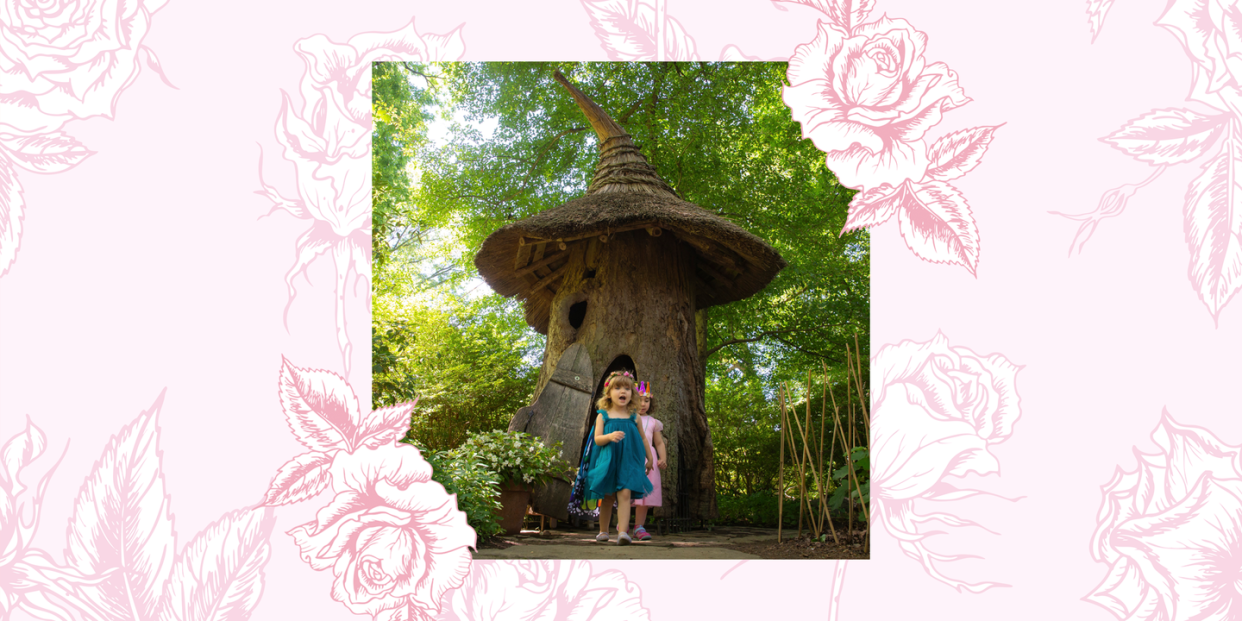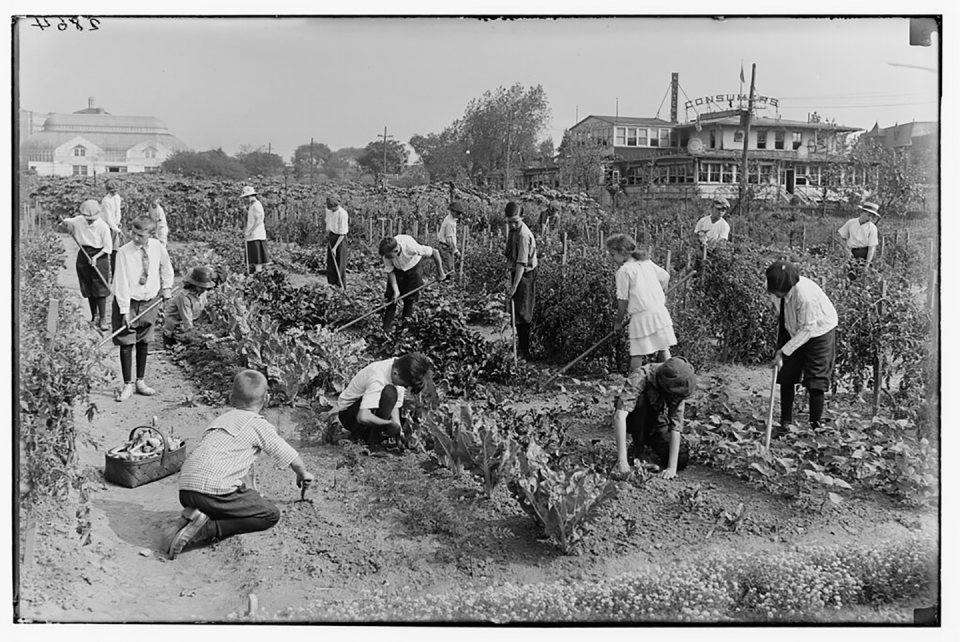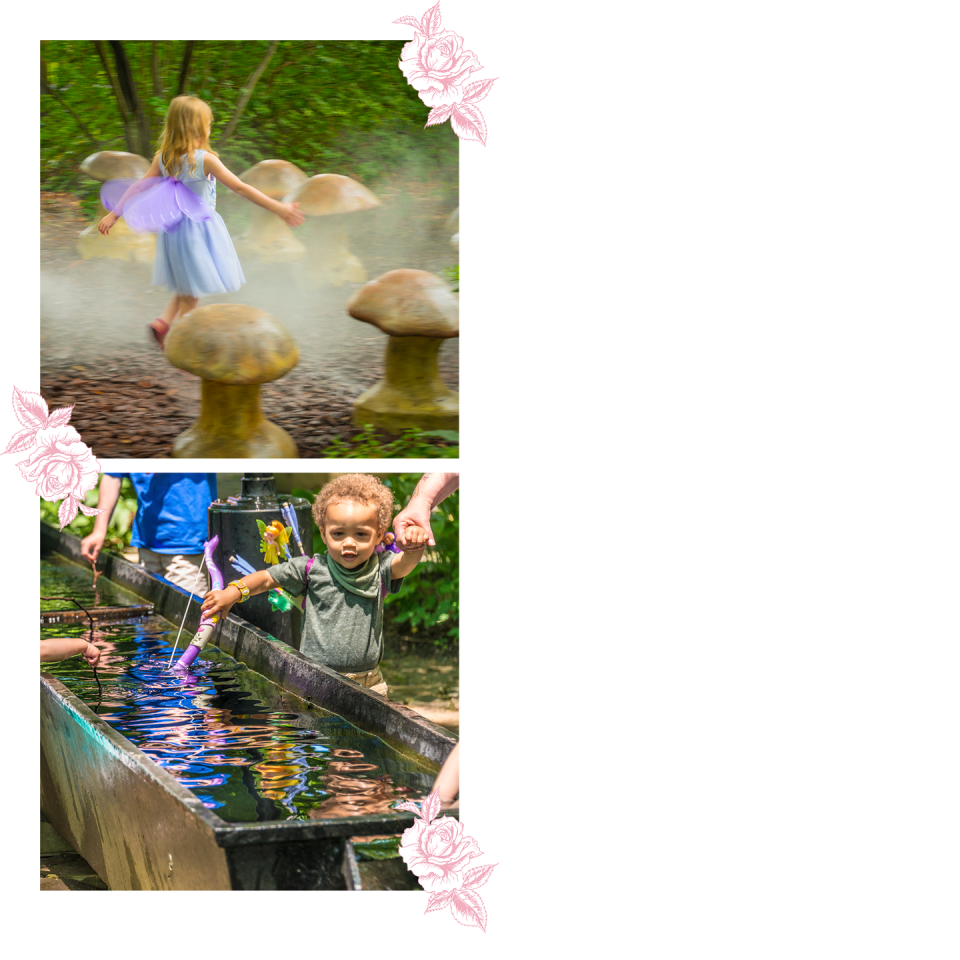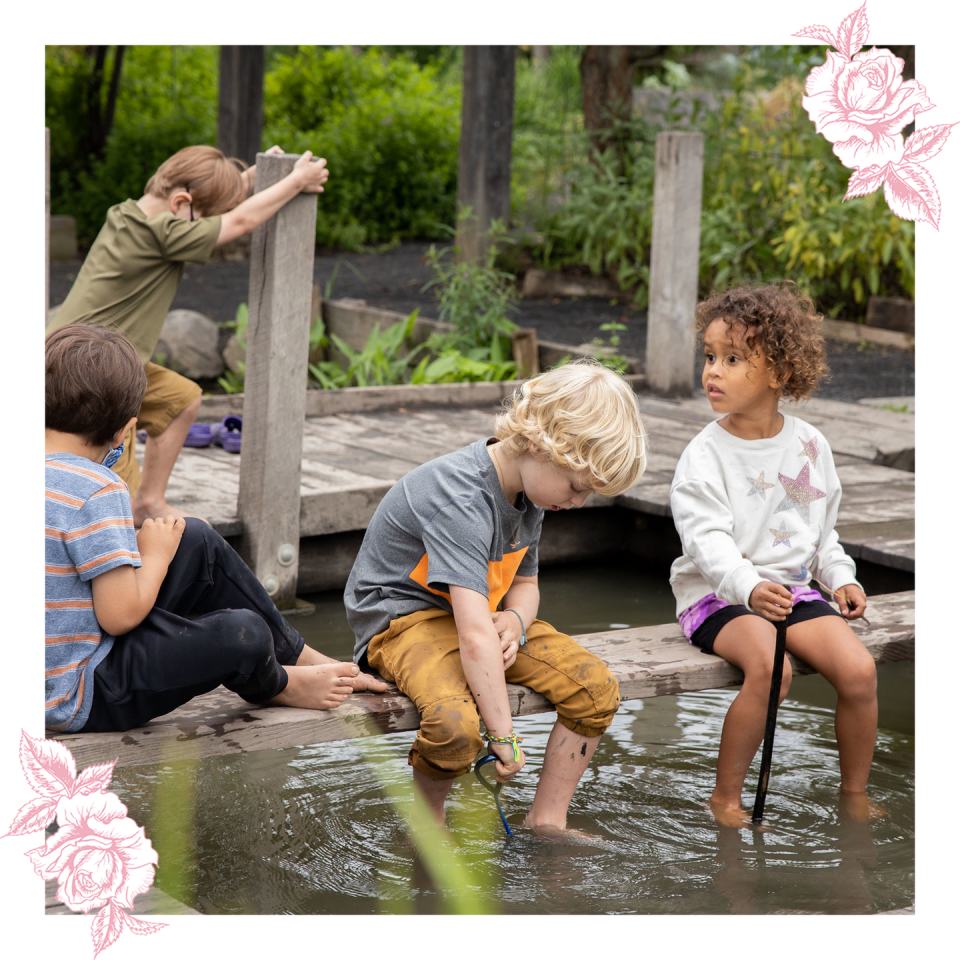My Secret to Getting Kids Off of Screens and Outside Into Nature

Watching my toddler run amok in flowers, nearly fall in a pond in search of a frog and bite off a piece of kale from the plant, I’m filled with joy at her freedom and her discoveries of the outdoors. No matter how busy the morning, no matter how many emails are waiting, just 30 minutes, 15 minutes, even five minutes in the Ithaca Children's Garden (ICG) resets my balance (and hopefully tires her out).
"It's a very special thing to introduce a child to the wonder of their larger natural ecosystem, in any simple ways," says Ashley S. Lingerfelt, a Georgia-based licensed professional counselor.
For more than two decades, the ICG has ensconced kids in nature, serving as an incredible resource for locals and visitors. "The spirit of free play that runs throughout the entire garden that invites children to be kids, unapologetically, is one of its most compelling facets," says ICG Executive Director Erin Marteal.
Community children's gardens like ICG have their roots in the school garden movements of the early 1900s when, according to the Cultural Landscape Foundation, more than 75,000 school gardens were created primarily in cities as part of an educational philosophy of nature study. World War I saw the focus of the gardens shift away from children and education to focus on local food production. After the war, many of the gardens disappeared — although some, such as the children’s garden at the Brooklyn Botanical Garden, established in 1914 — remain.

Children’s gardens as we think of them today started to appear throughout the United States in the 1990s. One of the first, according to the American Horticultural Society, is the River Farm Children’s Garden, based in Alexandria, Virginia, which includes several themed areas for kids including a bat cave and a prairie garden.

And while they vary in size, from a simple raised garden bed outside a library to acres of nature-themed playscapes and experiences, at their heart, children's gardens are designed to provide multi-sensory experiences while teaching children about the way their local ecosystem works.
While there's no data on how many of these gardens exist, the research on their importance is clear. "Children's gardens are typically designed with different sensory needs in mind, and sensory input in the developing mind is so important," says Lingerfelt. It goes beyond the aroma of flowers. "Many children's gardens have access to climbing structures, beautiful colors, a multitude of textures. All those wonderful sensory opportunities help kids' brains develop."
Even while a growing body of evidence has shown the importance of spending time outdoors, most children spend only about four to seven minutes a day in unstructured outdoor play, according to the National Recreation and Park Association. That's a trend communities, like St. Louis, are trying to reverse. The city opened the Anne O'C. Albrecht Nature Playscape, an experiential playspace that includes a sensory garden in addition to eight other nature-inspired areas, such as a meadow, spring and wetlands.
"When we started planning the playscape, we knew that kids were spending more and more time inside and on screens and that it was really affecting their health and learning," says Lesley Hoffarth, the President and Executive Director of the nonprofit conservancy Forest Park Forever, of which the nature playscape is a member. "We also knew that access to nature, especially for communities of color and low income communities, had been restricted. At the same time there was all this research showing that unstructured playtime is really invaluable to the health and development of kids, so we wanted to create a place for kids and their caregivers to explore nature in a more urban setting and bring nature to kids of all abilities, from all sorts of walks of life."
Kids can reap benefits by spending as little as a few minutes a day in nature, even if that time isn’t in a dedicated children’s garden. "Research shows us that the more children participate in outdoor activities the more they experience increased regulation, flexibility and adaptability," says Lingerfelt. "If you take ten minutes with your child outside it can make a world of difference in the way they approach the day.”

To help kids and their caregivers make the most of the Anne O'C. Albrecht Nature Playscape, Forest Park Forever has playscape passports that kids can pick up that includes stickers to mark which activity parts of the park they’ve visited. The park also does education outreach focused on families served by the St. Louis City Public School including field trips and pop-up play events and the St. Louis City Public Library hosts read-aloud events. Forest Park Forever hopes that, by introducing kids to nature from an early age and reconnecting their adult caregivers with it, they will inspire families to take part in protecting the environment. "Knowing that kids are going to be in charge one day, we wanted to instill an appreciation for nature, a realization that it's fragile. That it needs our stewardship," says Hoffarth.
Amazingly, my daughter has yet to fall in the pond, but while it’s been months since we've been up in Ithaca and will be months more before we return she still talks frequently about ICG. In the meantime, she loves checking on everything we grow at home — be it mushrooms or kale from an indoor grow kit or the trees, flowers and plants in her own backyard — in between twirling around and rolling down the hill. Soaking up the world around her and some new skills in the process.
You Might Also Like

